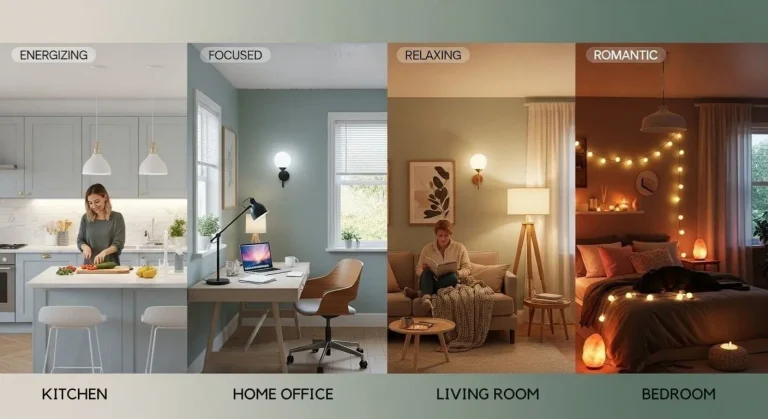How to Create a Powerful Calming Bedroom Atmosphere Through Color Psychology
Ever feel like your bedroom is more chaos than calm?
If walking into your bedroom feels more like a stress-inducing episode of a home makeover gone wrong, you’re not alone. Most of us underestimate how powerful color can be in shaping the vibe of our space. The good news? You don’t need to be a design guru to make a soothing sanctuary. This guide on how to create a calming bedroom atmosphere through color psychology is exactly what you need to turn your bedroom from a stress zone to a zen den.
Let’s dive into how the psychology of color can be your secret weapon for sweet dreams and serene vibes.
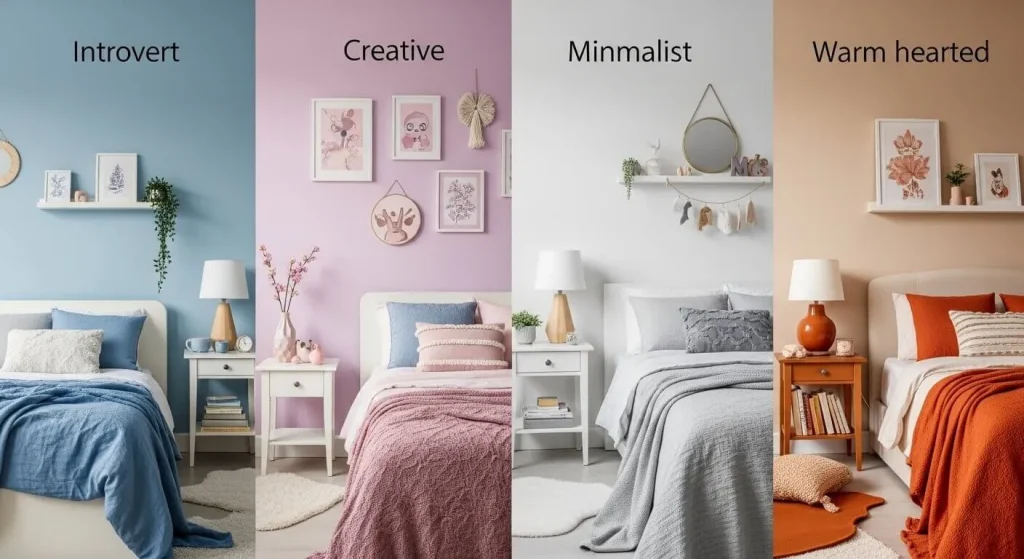
H2: Why Color Psychology Matters in Your Bedroom Design
Colors do more than just decorate a room—they influence your emotions, sleep patterns, and overall mindset. Imagine trying to wind down in a bright orange room. Yeah, good luck with that.
Color psychology is the study of how different hues affect human behavior and emotions. When applied to bedroom design, it becomes a tool for:
- Reducing stress
- Encouraging relaxation
- Promoting restful sleep
Studies have shown that certain colors can actually lower your heart rate and blood pressure. So yes, your wall color might be sabotaging your sleep.
Want proof? Check out this research by Verywell Mind, which digs into the science of how colors affect us mentally and physically.
So, whether you’re a fan of soft neutrals or moody hues, understanding color psychology can help you design a bedroom that literally helps you sleep better and feel calmer.
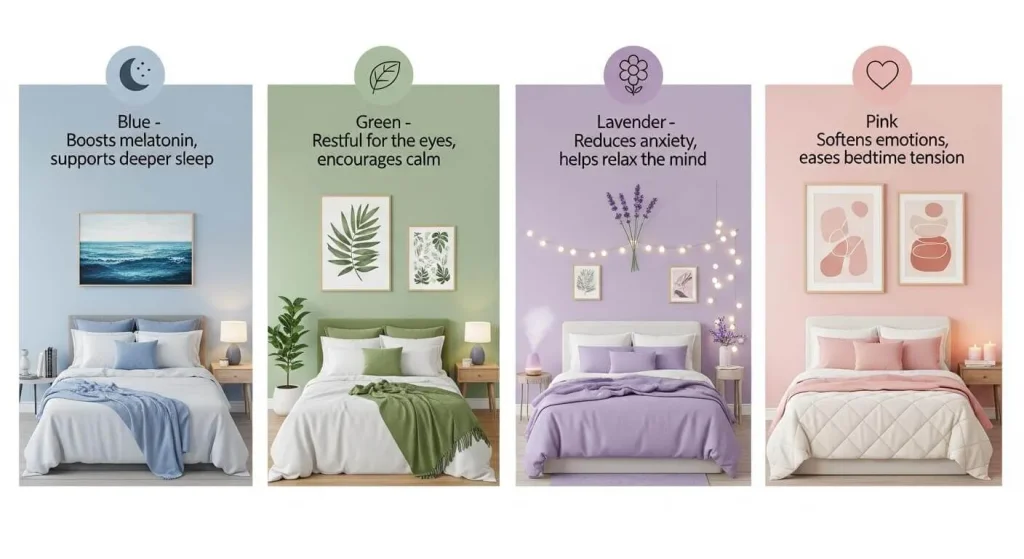
H2: Best Colors for a Calm and Relaxing Bedroom
You don’t have to go full “zen master” to create a calming bedroom. You just need the right palette.
Here are the most effective colors based on color psychology:
1. Blue: The King of Calm
- Soft blues can reduce anxiety and heart rate.
- Ideal for bedrooms because they mimic the sky and ocean.
- Try dusty blue or light denim shades.
- Pro tip: Pair with white linens for a crisp, fresh look.
A muted blue ideal for serene vibes.
2. Green: Nature’s Neutral
- Green promotes balance and harmony.
- Sage green is particularly popular
3. Lavender and Soft Purples
- Calming and feminine.
- Often used in aromatherapy for relaxation.
- See purple bedroom ideas for visual inspiration.
4. Neutrals (Beige, Taupe, Soft Greys)
- These offer emotional neutrality and peace.
- Perfect for layering textures and materials.
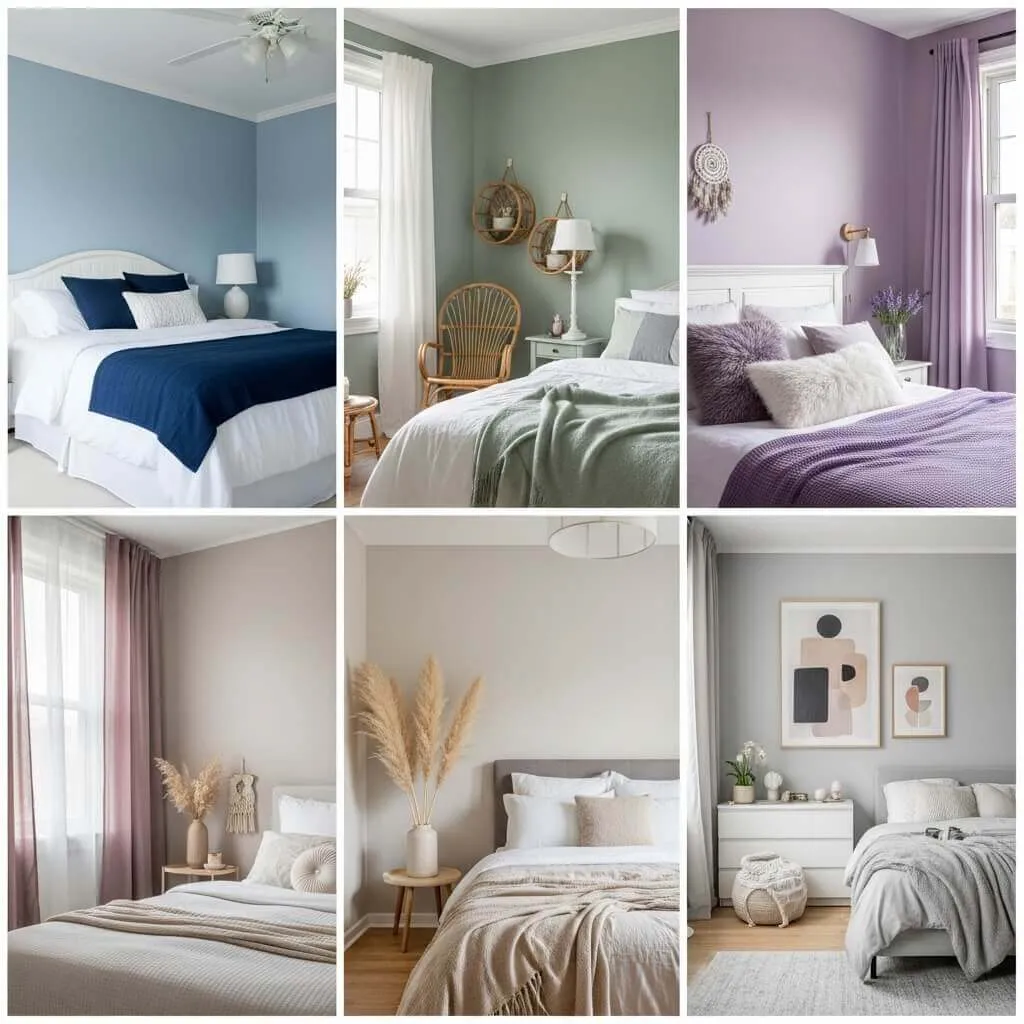
Curious how grey can work wonders? Don’t miss our grey and white bedroom ideas.
5. White with a Warm Undertone
- Clean, minimal, and very calming when done right.
- Add depth with textures like woven blankets or linen curtains.
Avoid bright reds, bold oranges, or neon shades unless you’re looking to design a bedroom that feels more like a nightclub.
H2: How to Choose the Right Color Based on Your Personality
No two people relax in the same way, so why should your bedroom look like everyone else’s?
Here’s a quick guide:
- Introverts: Cool blues and sage greens bring mental clarity and peace.
- Creative types: Soft lavenders and dusty rose shades add comfort without stifling imagination.
- Minimalists: Greys and whites with organic textures offer simplicity and calm.
- Warm personality types: Opt for warm beiges and muted terracotta tones.
Also, don’t forget lighting. The same color can feel entirely different in natural daylight versus artificial bulbs.
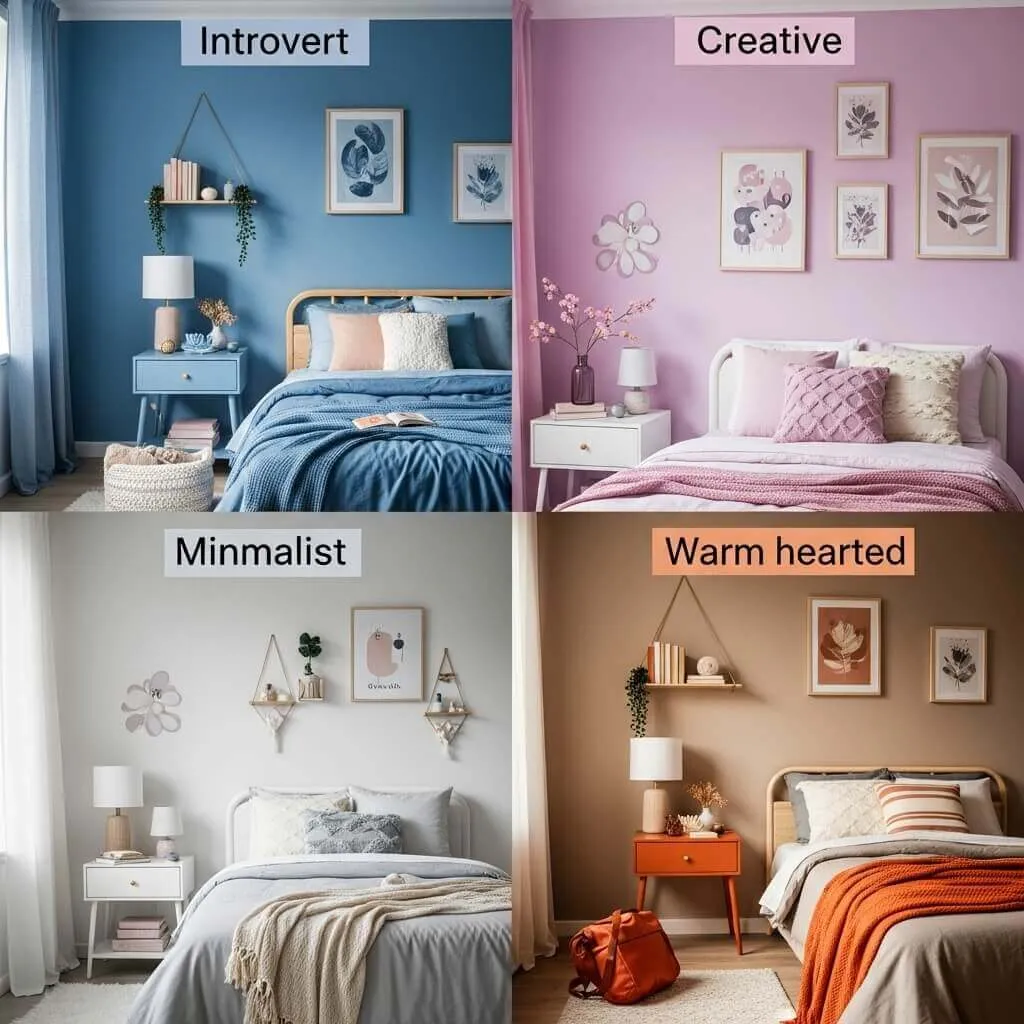
Quick Tip: Always test paint samples on different walls before committing. Morning light vs evening light changes everything.
H2: Layering Your Space: Beyond Wall Color
Color isn’t just for your walls, folks. You can infuse calming energy into every corner of your room by layering tones strategically.
1. Bedding and Linens
- Opt for cool-toned bedding in blue, green, or lavender.
- Linen sheets = breathable and super aesthetic.
- Try Brooklinen’s classic sheets.
2. Accent Pieces
- Think throw pillows, rugs, and curtains in complementary calming shades.
- Incorporate pastel or muted colors that don’t fight for attention.
3. Wall Art
- Choose calming imagery like ocean scenes or abstract pastels.
- Avoid chaotic or overly saturated designs.
4. Furniture
- Go for wood tones or painted furniture in soft colors.
- Whitewashed or light oak pieces blend effortlessly into calming spaces.
Bonus Tip: Want a touch of dramatic contrast? Use deep green or soft black sparingly in decor pieces or furniture. (Check out hot pink and black bedroom ideas for bold meets calm.)
H2: Color Psychology Meets Sleep Science
What if your bedroom could help you sleep better just by changing colors? Yep, it’s not a gimmick.
Here’s how colors affect your sleep:
- Blue tones promote melatonin production.
- Greens are restful for the eyes and mind.
- Pale pinks can soothe emotional tension before bed.
Fun fact: In a study of 2,000 people by Travelodge, those with blue bedrooms slept the longest – an average of 7 hours and 52 minutes per night.
So if you’ve been battling insomnia and your walls are bright red… well, maybe it’s not just your coffee intake.
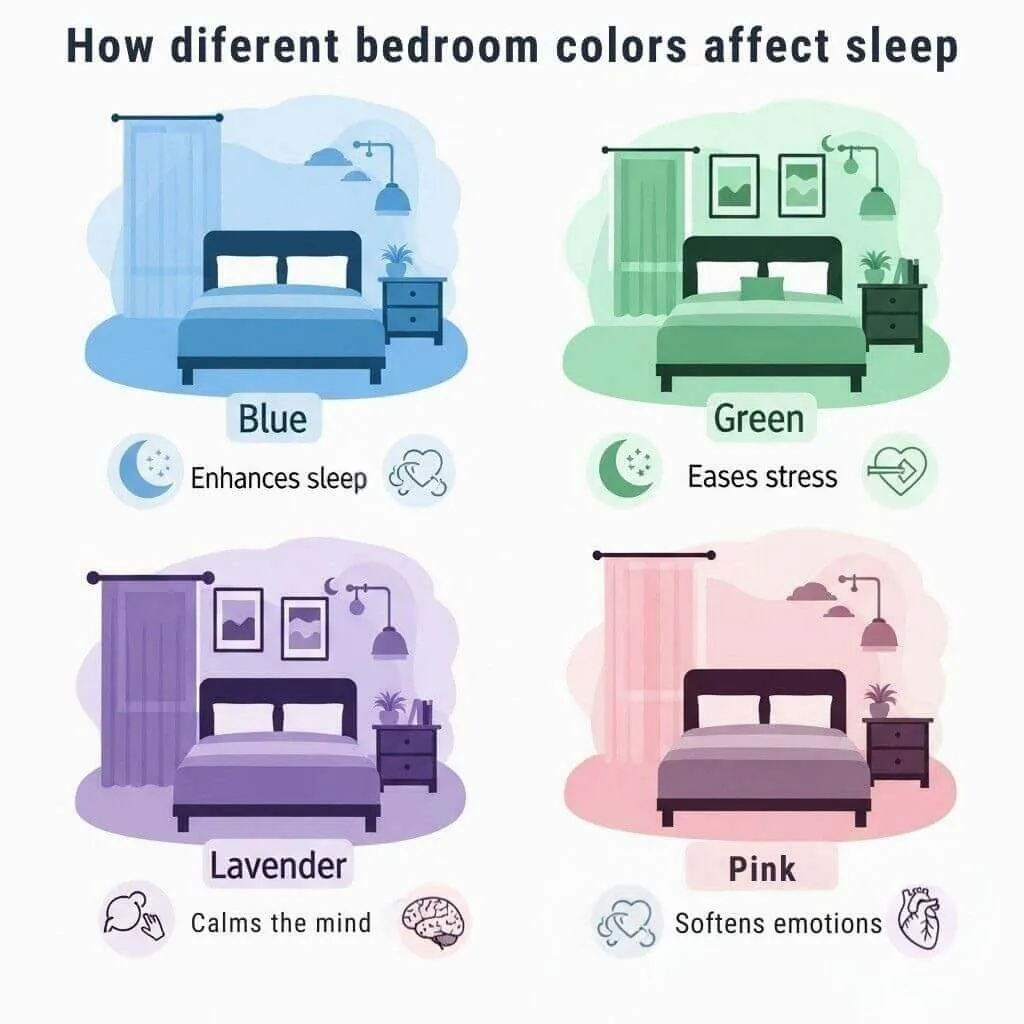
Want more inspo? Head to our pink bedroom ideas for the soft tones that aid sleep and soften your room.
H2: Tips to Maintain the Calm Vibe Long-Term
Color is just the start. Let’s talk about how to keep that serene energy flowing daily.
1. Declutter Like a Pro
- Visual clutter equals mental chaos.
- Invest in under-bed storage or minimalist nightstands.
2. Use Aromatherapy
- Lavender, chamomile, and eucalyptus help reinforce the calm color palette with scent.
3. Mood Lighting
- Dimmable warm-white bulbs are your best friend.
- Salt lamps and fairy lights add a soft glow.
4. Avoid Over-Decorating
- Leave white space on walls for visual breathing room.
Want a stunning combo? See how purple and green bring balance in this purple and green bedroom setup.
Conclusion: Your Peaceful Bedroom Awaits
Alright, color adventurer – you’re officially armed with the tools to build your dream bedroom haven. Remember:
- Use calming colors like blues, greens, and lavenders.
- Let your personality guide your palette.
- Extend your color strategy to bedding, decor, and lighting.
- Support your visuals with sensory cues like scent and softness.
A soothing bedroom isn’t about Pinterest perfection. It’s about walking into a room and feeling your shoulders drop a little. If your bedroom doesn’t yet make you sigh with relief, it’s time for a refresh.
